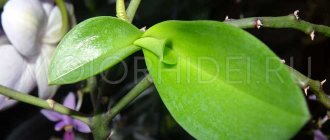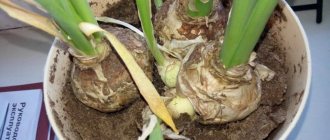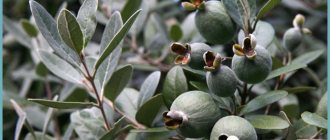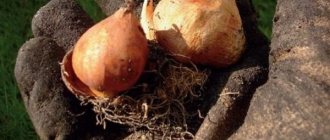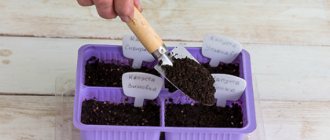How to plant a baby orchid? Sooner or later, every gardener begins to be interested in a similar question. The formation of children on the mother specimen is a natural process for the plant. Essentially, a baby is a copy of an adult orchid, but in miniature. Once matured to the point where it can be planted, it will have all the characteristics of an adult plant and will be able to grow on its own. Most often, the baby has a stem, leaves and roots at the time of its transplantation, but sometimes it can even produce a flowering shoot and bloom. It looks quite beautiful - an orchid in miniature.
Methods of propagation of the phalaenopsis species
In the wild, the life cycle of phalaenopsis is similar to that of a regular flower. It consists of six stages:
- plant flowering;
- pollination;
- seed germination;
- seed formation;
- seed ripening;
- germination.
The pollination stage occurs with the help of insects flying to the fragrant flower, after which the plant develops seed capsules. The seed pod usually matures within 6-8 months, after which it bursts, and small seeds fly through the air and germinate on tree bark, on stones and other stable surfaces.
But how does an orchid give birth to babies at home? There are 4 ways:
- Budding/cuttings.
- Root propagation.
- Division.
- Reproduction by seeds/sexual method.
Answering the question where do orchid babies come from, we emphasize: babies appear on the peduncle or from the growing point.
Budding
Most often, this species reproduces at home by budding, although experienced gardeners also practice the sexual method. This process is quite labor-intensive and not suitable for beginners.
In order for a baby phalaenopsis to appear on an orchid, or more precisely on the stem of a peduncle, the plant in most cases needs to go through a flowering cycle. This method is called cuttings.
The plant does not dry out the stem, and after some time the dormant buds wake up and swell. Often side shoots appear from them, forming new buds, but sometimes 2 small leaves appear there first. Over the course of 2-3 months, the leaves will increase in size, gain strength and feed on the resources of the mother plant.
After a few more months, roots appear on the baby and as soon as they reach 2-3 pieces with a length of 5 cm or more, the baby phalaenopsis can be planted.
Root propagation
In critical situations, a basal shoot appears on the flower. Why critical? Because the phalaenopsis will try with all its might to continue its cycle in babies, but the orchid will not have the necessary conditions for flowering.
The basal baby appears in the lower part of the trunk: at first it will resemble a growing peduncle, but after 7-14 days it will become clear that this is offspring.
Division
In fairness, one more method of propagating orchids should be mentioned, but it is in no way related to the natural processes of the plant and is quite rightly considered barbaric. This is a method of dividing a trunk and it consists of the following.
After the orchid has collected good tops and aerial roots, it is cut horizontally along the growth point, separating the top from the bottom, leaving only 2 leaves. It is here that the future orchid can appear, and the upper part is dried from below and planted in a new pot along with aerial roots.
Quite often, orchid lovers try to provoke reproduction and force them to produce offspring using hormonal paste. This method is considered quite effective, but it should be used exclusively on healthy plants.
It is also possible to obtain 2-3 children from 1 bud at once, united by one growth point. Such “Siamese twins” have low viability and often die before transplantation. Well, naturally, the owners of such plants then ask why the orchid does not bloom, does not grow roots, and does not grow leaves. The reason is a violation of the plant’s genetics and its natural qualities.
Where can it appear?
The baby emerges from an orchid bud and initially looks like a stem with two small leaves.
This usually happens after flowering. The roots do not appear immediately.
Where can the cake appear:
- Most often this happens on the peduncle. A waiting bud is formed, and one or several babies grow from it.
- Young shoots may appear in the root zone. At first, such shoots are difficult to distinguish from the root itself. They are formed from a dormant bud.
- In the axils of the leaves, the young plant grows instead of the expected peduncle.
- It is easy to see the cake as a shoot on the trunk.
On the peduncle
On the roots
What sprouts do phalaenopsis have?
Depending on how the orchid gave birth to the baby, babies are classified as:
- baby on the trunk;
- root baby;
- division;
- seedlings.
We will not consider the process of development and care of seedlings and cuttings, since in the first case this process is quite labor-intensive and lengthy, and in the second we will talk about the resuscitation of the plant.
In general, the young orchid on the peduncle and at the base looks the same, both of them can bloom while still on the mother plant, but there is still a difference in how to care for the baby phalaenopsis orchid. It’s quite easy to do this at home, the main thing is to know their features.
Radical baby: developmental features
As already mentioned, such a baby appears in extreme conditions for the mother plant. The appearance of a root baby is always a reason to reconsider the conditions of keeping your tropical beauties.
Important! If your blooming orchid produces offspring, this does not mean that it is good! Perhaps she takes advantage of every opportunity to reproduce.
Another reason for the appearance of a baby on the orchid trunk is flowering from the growth point of the mother plant. After releasing the peduncle from this place, the phalaenopsis will no longer be able to grow new leaves, and in order to extend its life cycle, it can give birth to offspring.
The basal children of the phalaenopsis orchid develop rather slowly. In the first few weeks they produce 2-3 leaves, which will develop over 3-4 months. The growing body receives nutrients from the mother, therefore, you need to pay attention to the condition of the root system.
The roots should be green when moistened or silvery when dry; a good sign is the appearance of bright green tips, indicating the development of the plant. The mother's leaves should have good turgor and have neither dry nor wet spots.
Unlike stem children, root children do not need to be planted, but we will talk about this a little later.
Features of the stem baby
Before you think whether it is already possible to separate the baby from the mother orchid, you need to know when it will be able to exist separately:
- Stem babies should grow roots 5 cm or more in length.
- A young orchid on a peduncle should have at least 3 leaves, measuring 5 cm or more.
Next, we’ll talk about how to raise a baby phalaenopsis orchid in order to remove it from its mother as quickly and correctly as possible.
When is it correct to separate a shoot?
When a baby appears, a certain and quite long time must pass before it becomes possible to separate it.
On average, you need to wait six months for this, sometimes more. The offspring should get stronger.
Signs by which you can determine whether a cake is ready for transplantation:
- The roots must be strong and long - at least 5 cm. Their number is 3 or more. The better developed the root system, the greater the chance that the small plant will successfully take root.
- The two small leaves that appeared at the beginning turn into 5-6 full-fledged leaves. With their help, the planted shoot will be able to breathe and receive nutrition from light.
- Time spent with mother is at least 5 months.
How to care for root sprouts
In the scientific literature, the basal baby is called basal. This once again confirms that this plant is entirely dependent on the mother plant, and, therefore, it needs similar care. Essentially, it is an orchid without its own roots, and if you decide to separate the two plants, only one will survive.
In this situation, opinions can be very controversial. Most gardeners consider it reasonable to separate them only if the mother has a diseased root system. Since the new growth is located in close proximity to the growing point, no matter how you separate the two plants, one of them will be damaged.
It is worth noting that there is also successful experience in dividing such plants, but this is rather the exception that confirms the rule!
Next we will look at how to grow an orchid from a baby on a peduncle.
Choosing a pot and soil
For small orchids, a transparent plastic pot with holes for air intake is suitable. The size should be small. When the plant begins to develop and the root system takes up the container, it will need to be transplanted into a larger pot.
Regular soil is not suitable for orchids. They grow in a special substrate, which consists of small pieces of bark, charcoal and sphagnum moss.
Read how to prepare your own substrate for an orchid and what it should consist of here.
Caring for a baby orchid on a peduncle
The appearance of offspring on peduncles in phalaenopsis does not happen very often, even with hormonal stimulation of the kidneys. Of course, many questions arise about planting a baby orchid separately from its mother in the shortest possible time. This is especially important for weakened plants.
How to care for a plant with children and how to stimulate the growth of a young orchid? In order for a plant from a small sprout to become a teenager capable of living separately, it is necessary to build up the root system. Thanks to nutrition from the mother, the development of the offspring also occurs, however, experienced gardeners do not let everything take its course, but help the plant gain strength as quickly as possible.
Let's grow roots for the baby
The following biostimulants are used for root growth:
- Kornevin.
- Heteroauxin.
For lovers of natural ingredients, you can use a water solution of honey or aloe juice.
To speed up root growth we need sphagnum moss. It should be soaked in a small container in a solution of any stimulant listed above, squeeze out excess moisture and attach to the neck of a young plant using a thread. Moss should be moistened daily with a spray bottle.
After the first roots appear on the baby, the moss is removed to prevent waterlogging and rotting of the roots, the mother plant is placed in a well-lit place and watered according to the usual schedule.
How to plant a baby orchid
Separation of the baby and planting in a new pot is carried out when the plant gains a significant mass of tops and roots. Here it is difficult to call a young plant a baby; it is a real young flower. Of course, it will bloom no earlier than in 3-5 years, but the very miracle of its birth cannot but rejoice.
You need to plant a baby orchid as follows:
- We cut off the baby together with the peduncle with a sharp sterile instrument 0.5 cm above the growth point and 0.5 cm below. The fewer peduncle remnants you have left, the better.
- Let the sections dry for 6 to 12 hours. We don’t sprinkle anything on the cuts!
- In a prepared pot about 10 cm in diameter, pour fine expanded clay for drainage and some bark of the finest fraction.
- We seat the baby there, having first placed a piece of foam under the neck.
- Add bark according to the volume of the pot and place it on a tray.
- The first watering should take place no earlier than 5 days after planting.
It is also important to remember that you need to start fertilizing the teenager no earlier than 30 days after it is separated from the mother plant and replanted.
Separation process
The process is separated using a sterile instrument.
The easiest way is to separate the baby from the peduncle. It is separated with a sharp knife from a part of the mother flower. This part is 1-2 cm.
To separate the shoot that has formed on the root, first remove the top layer of the substrate and cut the root connecting the young shoot with the mother plant with scissors.
You must act as carefully as possible so as not to damage the root system.
The sprout that appears in the leaf axil should be cut off with a piece of adult culture (1-1.5 cm). The cut areas must be treated with a bactericidal agent.
If the time for separation has already come, but the roots have not appeared, the children are separated in the same way as those with roots. In the future, they need to be rooted.
Methods for obtaining children
There are various methods for getting babies on orchid plants.
Cuttings
You can take cuttings from an already faded peduncle. For this :
- It's being cut with a sterile pruning shears into pieces so that each contains a waiting bud;
A baby orchid can be grown on a cut peduncle. - The cuts are treated with wood ash so that the infection does not enter the peduncle through the cut;
- To ensure that a baby appears, the waiting bud is treated with cytokinin ointment and all cuttings prepared in this way are placed in a greenhouse;
- The greenhouse must be prepared in advance . A food container with a well-fitting lid is suitable for this purpose;
- Moistened sphagnum moss is placed on the bottom and cuttings are placed on it so that the bud is directed upward;
- After laying the cuttings, the container is tightly closed with a lid and placed in a bright place.
Cutting off the tip of a monopodial orchid
The top of Phalaenopsis can also serve as a cutting . This propagation is called flower rejuvenation. For this:
- Cut off the crown, on which there are 8 leaves;
- The cut is treated with activated carbon or wood ash;
- After which the cuttings are dried and planted in the bark, like a young baby, covering the aerial roots with pine bark;
- To prevent the flower from wobbling, it is secured with wire or plastic sticks to support the flower stalks.
The remaining stump is placed in a bright place and the care that was provided to the orchid before division is continued. After a long time, babies may appear on the stump, which can be left right there in the container or planted out when they reach a certain size.
IMPORTANT! Whatever method the grower chooses, he must follow all the recommendations, and then the young sprout will take root in the new place.
Shortening a faded peduncle
When the peduncle stops flowering, it must be shortened to the first waiting bud. This will help stimulate a side shoot for flowering or the baby will begin to develop.
Pruning is carried out using pruning shears treated with alcohol to avoid infection getting inside the plant. The cut is made 4 cm above the bud, since the remaining peduncle will dry out. To prevent this from injuring the bud, leave a small section of the peduncle to dry.
Difficulties
A difficult task for a gardener can be situations with a child whose roots do not grow. Causes:
- lack of lighting;
- unsuitable fertilizer;
- lack of moisture.
First they eliminate the cause, then they try to grow the roots. The following methods of growing rhizomes are known:
- Floating escape on foam.
- Hanging the sprout above the ground.
- Creating a greenhouse in a plastic cup with a hole, at the bottom of which drainage is placed, then moss (sphagnum) rolled into a ball and tied with thread, soaked for half an hour in water. A support for the baby is built outside the glass so that the sprout does not touch the moss.
You can also grow roots in children who grow on the mother orchid. Fastening wet moss to the base of the peduncle helps the shoots to develop roots. The rhizome grows over a period of 3-6 months.

